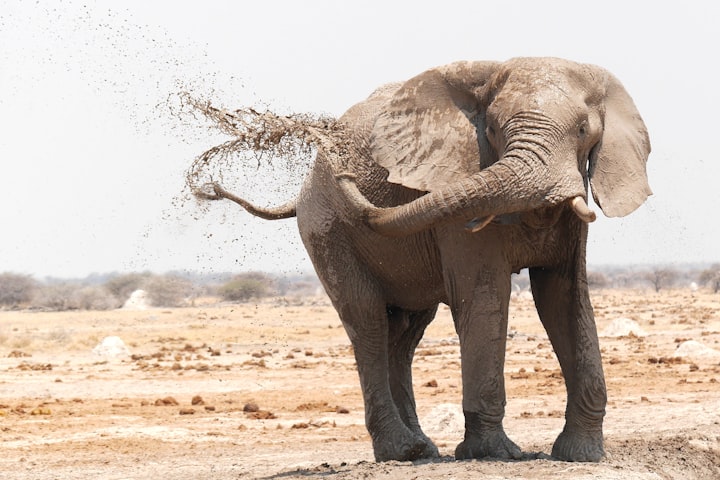Designers shocked by the force of an elephant's trunk
Elephant trunks can do a lot. They can knock over tree branches. Or they can delicately pick up food. An elephant trunk is all muscle. It has two nostrils. But exactly how elephants use their trunks to eat has always been a mystery.
An elephant's trunk is a solid cylinder that is so solid it can knock off tree limbs. However, it can likewise snuff up small bits of food without breaking them. Also, presently, researchers are revealing more insight into how elephants utilize their trunks to move air, water, food, and that's just the beginning.
Elephants are the solitary living area creatures with a long, boneless trunk. Inside, a trunk is isolated into two nostrils by a delicate divider called a septum. Yet, precisely how elephants utilize their trunks for eating has consistently been a bit of a secret.

Researchers Look Inside The Elephant Trunk
Andrew Schulz drove the group. He's a mechanical designer at the Georgia Institute of Technology. Mechanical designers study the movement and the properties of materials. Like different specialists, they configuration, assemble, and test gadgets. Schulz and his group examined an African elephant in Zoo Atlanta.
The researchers definitely realized that elephants maneuver water into their trunks. They then, at that point shower the water into their mouths to drink. However, the group discovered the storage compartment doesn't work like a basic straw. To suck up water, an elephant grows its trunk. It does this by augmenting its noses. This makes more space in the storage compartment, permitting the elephant to store more water. It chops down the number of grunts it'll have to pull in water to drink or hose itself down.

The ultrasound imaging showed that the accessible volume, or the measure of room, in every nostril could swell as the elephant grunted in fluid. The elephant, notwithstanding, utilized just a little piece of this additional room. The beginning limit was around five liters (1.3 gallons). In any case, the space inside the storage compartment could turn out to be in excess of 60% greater. Water additionally moved through the storage compartment super quick. It streamed at 3.7 liters (1 gallon) each second. That about approaches what amount can splash out of 24 shower heads without a moment's delay.
In different tests, the researchers offered the elephant little 3D squares of vegetables. At the point when given only a couple of 3D shapes, the elephant got them with the tip of its trunk. Be that as it may, when offered heaps of 3D squares, the elephant exchanged into vacuum mode. Here, its noses didn't extend.ll things being equal, it took in profoundly to suck up the food. Then, at that point it stored the food into its mouth.

Schulz's group took a gander at the sum and pace of water snuffed up by the elephant. From that, they assessed wind current in the nostrils. They gauge that now and again, the wind stream could surpass 150 meters each second (335 miles each hour). That is in excess of multiple times as quick as a human wheeze.
Trunks Inspire Scientific Discoveries
Aside from the nostrils, within an elephant's trunk is like a tongue or an octopus' limb, says William Kier. He's a biomechanist at the University of North Carolina. Biomechanists concentrate how living things move. Elephant trunks have no joints. A joint is a spot in the body where two bones meet. Trunks likewise have complex muscles. This permits elephants to make a wide scope of movements with their trunks. Furthermore, these movements can likewise be exceptionally exact, Kier says.
"How elephants utilize their trunks is really interesting," concurs John Hutchinson. He's a biomechanist, as well. He works at the Royal Veterinary College in England. Specialists have effectively been motivated to plan robots dependent on an elephant's solid and adaptable trunk. With these new discoveries of how trunks can both handle and suck like a vacuum to hold and move things, researchers can proceed to fabricate and refine robots.
The discoveries by the Georgia Tech gathering might yield significantly more stunning plans, Hutchinson says. No one can tell where motivation from living things will lead.






Comments
There are no comments for this story
Be the first to respond and start the conversation.